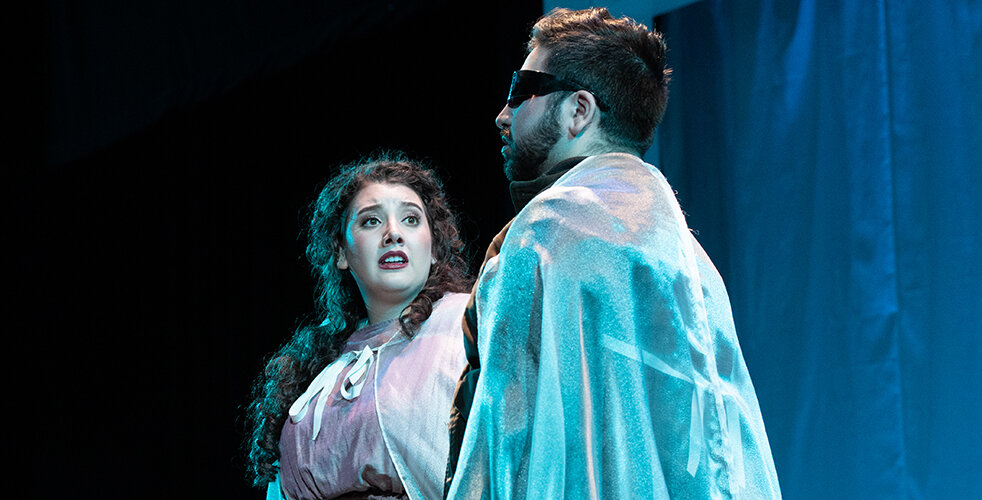Courtesy of Hofstra University
As one enters the packed Toni and Martin Sosnoff Theater located in John Cranford Adams Playhouse, the sight of a rather empty stage featuring a simple backdrop and few props surprises the eye. Above, there is a sign to display the English subtitles to the German opera. An announcement goes off to request that the audience silence their cell phones and, as the stage lights brighten, the Hofstra Opera Theater’s performance of “The Magic Flute” begins.
This Mozart musical fairytale is centered around Prince Tamino, a recruit of the Queen of the Night, whose job is to rescue the queen’s daughter Pamina from Sarastro, the evil high priest. Armed with a magic flute, Tamino ventures on this quest with his companion, Papageno. Once the two spot Pamina, they aim to break free of Sarastro’s world. Tamino then faces multiple trials as he attempts to prove himself fit to marry Pamina.
Though advertised as an opera, this work featured elements of an operetta, including humor and spoken dialogue. The humorous aspect was certainly evident within the performance. The character of Papageno particularly offered many of these comedic breaks, which were rather silly and goofy in nature. The scene in which he meets his long-awaited partner Papagena was a crowd favorite, as it received many laughs from the audience, most likely due to the scene’s outlandish context and delivery, from the song to the staged movements.
Another laughable moment in the show was the appearance of an inflatable dinosaur costume. This was quite a shock to see as these costumes are often worn on Halloween rather than on stage. Whether intended or not, this choice of attire most definitely unleashed many giggles throughout the packed house.
On the subject of costumes, though many of the pieces represented the Egyptian attire of the time, several characters embodied out-of-this-world personas with avant-garde and futuristic designs. For example, Papagena, who resembled an alien, wore knee-high metallic boots, a pure white wig and silver dress with a cellophane overlay. Sarastro and his guards were decked in all-white attire, with the head leader sporting a four-faced mask and cape.
Considering operas are almost entirely sung, the music of these works is vital to the quality of the performance. This particular show carried a wide range of notes from the lowest of the bass vocal range to the highest of the sopranos. The notes belted during the Queen of the Night’s aria were certainly at a high enough frequency to shatter glass. Tamino’s bold, strong voice burst into the audience while Pamina’s soft and sweet melodies drifted into one’s ear like the cool breeze. It was truly astounding that all voices could be heard without microphones.
This production was placed under the artistic direction of Isabel Milenski as well as the musical direction of Scott Jackson Wiley. The show, which opened on the evening of Friday, Jan. 31, at 7:30 p.m., also showed a matinee on Sunday, Feb. 2, at 3 p.m.
The performance of “The Magic Flute” by the Hofstra Opera Theater was certainly one to remember. The artistic stylings of both the cast and crew made for a show that had its audience laughing while simultaneously becoming invested in the characters and their stories.








